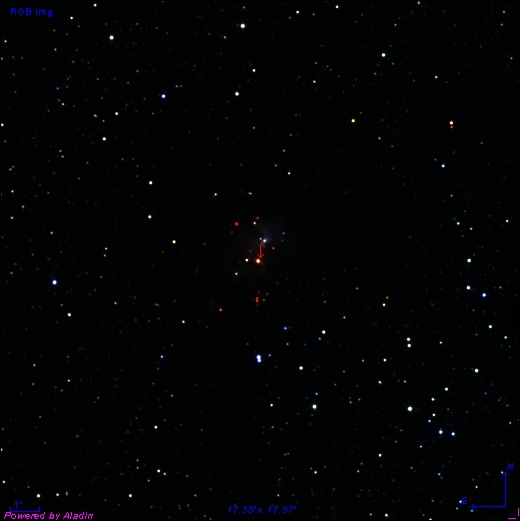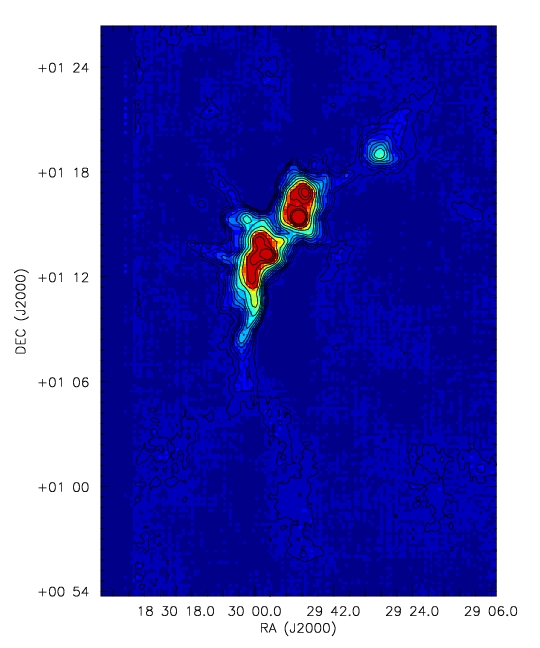
 Bolocam Captures Views of Star Formation in Early Stages.
Bolocam Captures Views of Star Formation in Early Stages.
A group of astronomers, led by Professor Neal Evans of The
University of Texas at Austin, used our millimeter-wave bolometer
camera, Bolocam,
along with the Spitzer Space Telescope (SST) and other instruments to
study star formation processes in different evolutionary stages.
The astronomer group, funded by the SST, is compiling complete examples
of
star forming regions from molecular cores to planet forming
disks. Bolocam is very sensitive to dense cold clouds in which
stars form. Thus, astronomers can study early phases of
star formation using Bolocam. They combined millimeter wave data
from Bolocam and infrared data from the SST to elucidate the processes
that control star formation. These examples provide constraints
on
theoretical models of the origin of the initial mass
function and evolutionary stages. The large sample available from
the Cores to Disks (c2d) program provides good statistics on the
numbers of objects in various stages, and these can be used to estimate
timescales.

Figure 1. Infrared (2
micron) image of the Serpens cluster, centered at the location of the
red arrow. This image mainly shows stars and star clusters.
(Courtesy of Dr.
Neal J. Evans II and the c2d team. )

Figure 2. Radio
(1millimeter) image of the cluster shown in Figure 1, taken with
Bolocam at the
CSO. Bolocam is very sensitive to dense cold clouds that are the
sites of star formation. (Courtesy of Dr. Neal J. Evans II and
the c2d team. )
Go back to A Digest of Recent News and
Scientific Results at the Caltech Submillimeter Observatory

 Bolocam Captures Views of Star Formation in Early Stages.
Bolocam Captures Views of Star Formation in Early Stages.

 Bolocam Captures Views of Star Formation in Early Stages.
Bolocam Captures Views of Star Formation in Early Stages.

